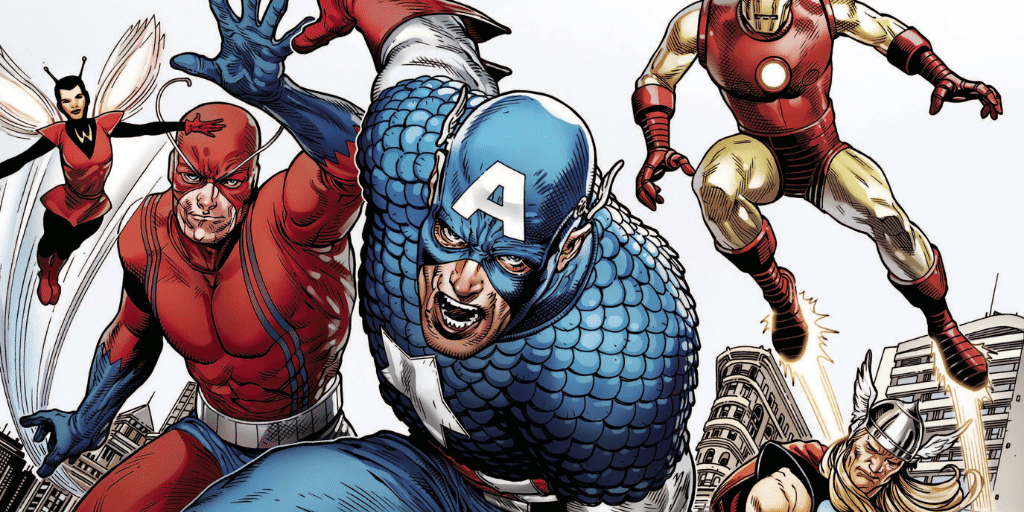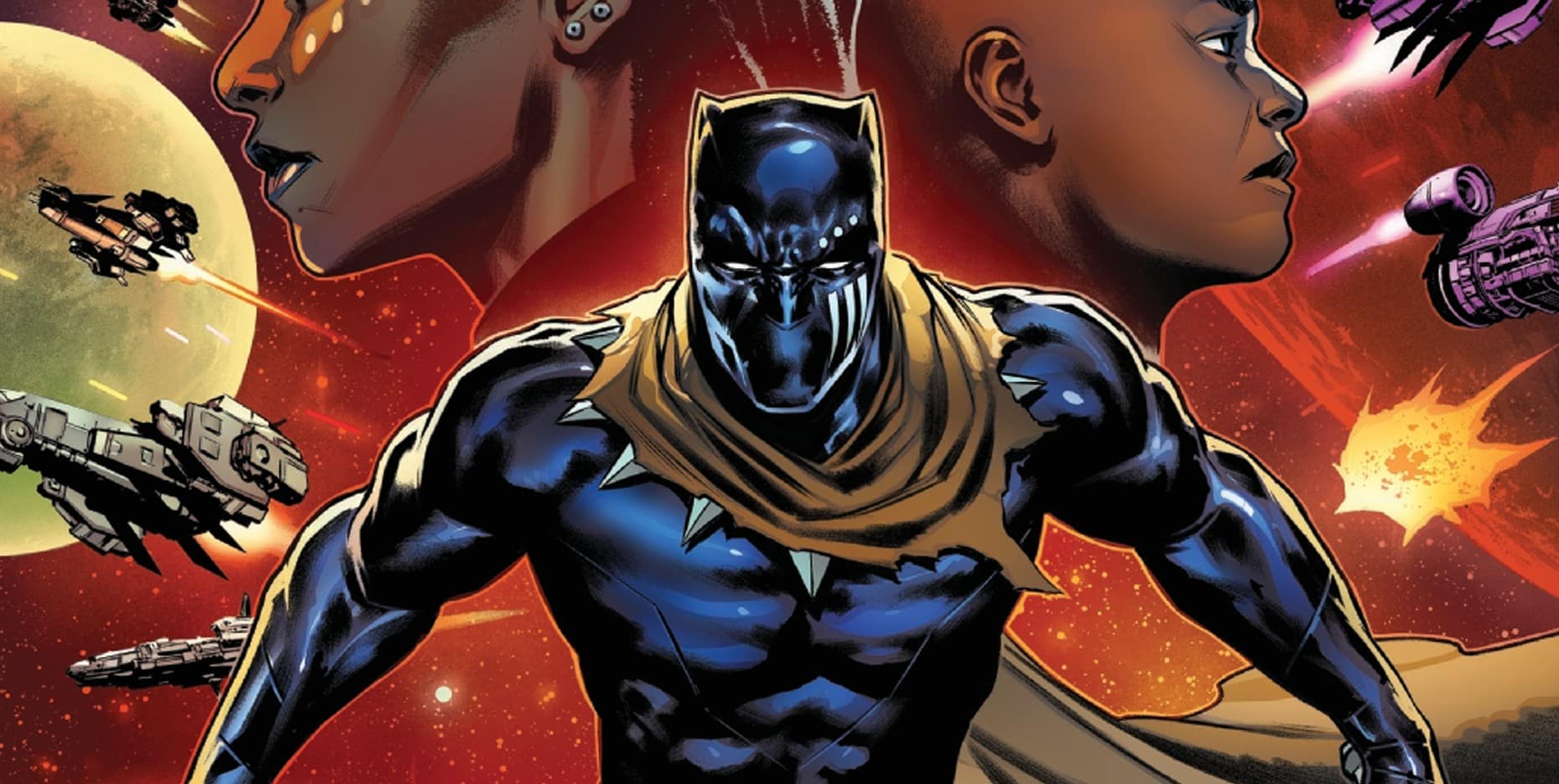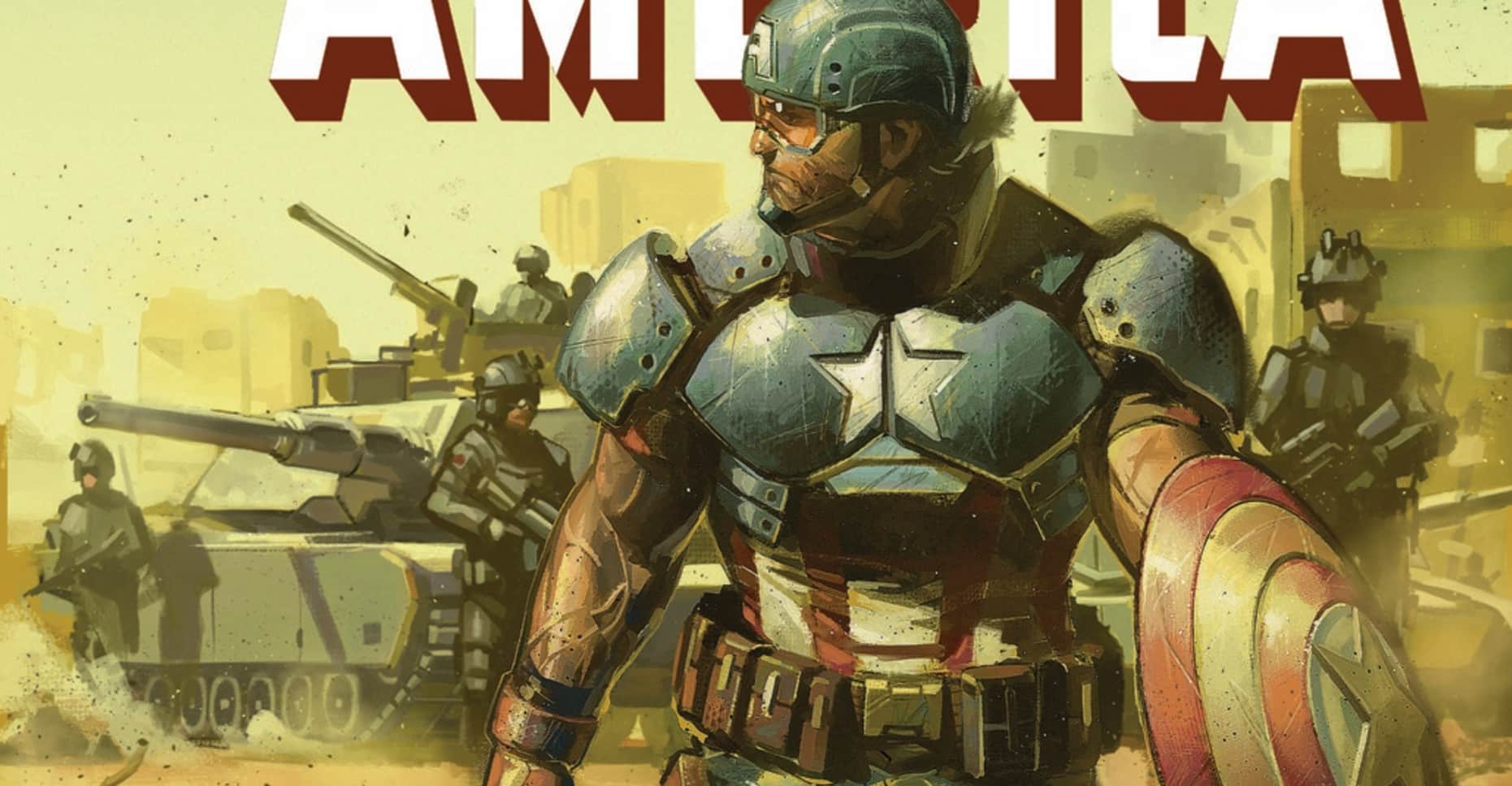Revisited comics a-plenty in Captain America’s 80th year in Captain America Anniversary Tribute, with credits below and letters by Joe Caramagna.

In September, Marvel released a special 45th anniversary edition of 1975’s Giant-Size X-Men #1 in which modern artists re-created the seminal comic one page at a time. According to comics sales tracker Comichron, the $5.99 book sold somewhere between 33,000 and 39,000 copies on launch.
Never being one to shy away from a gimmick so nice they had to do it twice, Marvel this week attempted to take the same approach for an 80th anniversary tribute to Captain America, having modern artists redraw two stories from 1941’s Captain America Comics #1 and 1964’s Avengers #4, the issue where Earth’s Mightiest Heroes defrost the old Cap-sicle. It’s a slightly bigger book than the Giant-Size tribute, for $1 more.
But while the Giant-Size re-creation was an interesting artifact that focused on one story and stoked the curiosity of current readers wanting to see the seeds of the Krakoan era in the first appearance of the Island That Walks Like a Man, the Cap tribute feels … less purposeful. In fact, in the CXF Slack we were bandying about the question of why they didn’t just do an anthology in the style of DC’s recent 80th anniversary specials. Of course, the answer to that was we’d end up getting new stories by Nick Spencer and Rick Remender, and the less said about that, the better.
These artist jams are not without merit, though. As a reader, it’s a fun challenge to go through the book and try to guess the artist on each page, then scroll up/page back to the credits to see if I’m right. Like Giant-Size, the Cap tribute brings out top talent. John Cassaday, David Lapham, Peach Momoko, Valerio Schiti, R.B. Silva, Adam Kubert, Joshua Cassara, Mahmud Asrar, Terry Dodson, Alex Ross, Chris Samnee and Pepe Larraz are just some of the names putting in best efforts to either mimic or augment the dynamism of Golden and Silver Age Jack Kirby. Momoko’s page in particular adds a soupcon of body horror that makes me want to check out her Demon Days book. (They’re not all that fantastic. There’s a reason I could call out the Sal Larroca page.)
But the problem lies not in art but in story. All due respect to Joe Simon, Jack Kirby and Stan Lee, what Marvel is re-creating is the product of men caught in an endless cycle of deadline-driven content churn. Especially in the Golden Age, comics were a four-color answer to pulp novels, standalone things to be made and consumed cheaply, not the $4, decompressed, serialized puzzle boxes we pick at and pull apart today. In that regard, they’re a thing to be appreciated by chin-stroking historians, more so than your average reader.
And Avengers #4, while an important issue in Marvel history, is just … a mess. It feels like four different stories that were sort of smooshed together into a sandwich that could fit in Shaggy’s mouth, as he pays no mind to the fact he left the toothpick meant to keep the sandwich together during presentation and it cuts up the roof of his mouth.
Story 1: The Avengers are hunting Namor, who’s in one of his “Destroy the surface world” moods. Story 2: The Avengers find Cap. Story 3: An alien turns the Avengers to stone, and Cap, still adjusting to being trapped in a world he never made and grieving the death of his partner, Bucky, tries to distract himself from his feelings to figure out what happened and in the meantime attempts to adopt Rick Jones. Story 4: The Avengers help the alien get home while fending off an Atlantean attack.
(Oh, and as my CXF colleague Zach Rabiroff informs me, that alien is later retconned into being one of the D’Bari, the broccoli-headed race wiped out by the Dark Phoenix in Uncanny X-Men. AND it later is named Vuk, played by Jessica Chastain in X-Men: Dark Phoenix.)
What made Giant-Size work better is its status as a product of the Bronze Age, the period by which serialized comics storytelling had truly started to gel into a more cohesive product, largely as a product of the first generation of fans-turned-storytellers — Roy Thomas, Jim Shooter and, in this case, Len Wein — stepping up to the plate. You can read the tribute, appreciate the art and see where the story is going. With Cap, you pick it up, appreciate the art, close it, kinda shrug and say “huh,” and put it down.
Or, if you’re like me, you write an 800-word essay about the evolution of comics storytelling. Go figure.
Dan Grote is the editor and publisher of ComicsXF, having won the site by ritual combat. By day, he’s a newspaper editor, and by night, he’s … also an editor. He co-hosts The ComicsXF Interview Podcast with Matt Lazorwitz. He lives in New Jersey with his wife, two kids and two miniature dachshunds, and his third, fictional son, Peter Paul Winston Wisdom. Follow him @danielpgrote.bsky.social.






